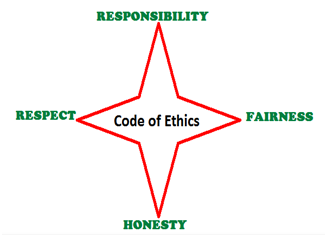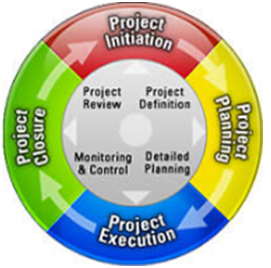Project Management Essay on APM Project Selection Methods
Question
Task:
Instructions:
For this project management essay, you research different methods of selecting projects and examine the initiation process. You also consider the Project Management Body of Knowledge (PMBOK) guide and, more specifically, explore the initiation documents.
Project Selection Methods and Initiation Documents
In essay writing, use the project (of your choice) throughout this assessment.
As you have discovered in your learning resources, examine project selection methods that can be applied appropriately to the given project and processes to conduct these methods. Consider the Project Management Body of Knowledge (PMBOK) and describe the initial process group and project documents that are created or used as inputs for a new project. Your assessment should contain 1500 words.
Answer
Introduction
The case of APM Corporation undertaken in this project management essay, has been identified to be an organization that delivers designs and maintains the strategic assets for the customers by offering services with regard to engineering consultancy and project management. The objective of this organization is to create a sustainable and successful company, followed by the accomplishment of its value. In this particular report, an IT project is to be developed for enhancing its communication strategies among the team members as well as the client in order to ensure the successful completion of the projects considered by the corporation. With regard to the implementation of the project, an appropriate project selection method will be identified, and the implementation of the project will be followed by PMBOK methodology.
Selected project idea for APM corporate
On evaluating the mission and objectives of the organization under consideration, it has been identified that APM Corporation designs maintain as well as delivers strategic assets to its customers. It aims to deliver a successful and sustainable company by developing full potential with regard to ensuring services by working as per client requirements. It ensures a viable completion of projects, and it has introduced the APM body of knowledge for the client's reference on the guidance of the delivery of projects. The employees are invited to submit their business cases that are to be considered by the corporation. However, the same procedure can be enhanced with a viable communication procedure to be executed with the implementation of an effective communication tool.
In that regard, a communication tool can be commented on in order to ensure effective communication between the APM Corporation and its customers. It will be introduced as an intuitive platform that will help the team of the organization to examine the business case of the clients and crack the processes as well as workflows with regard to the same on their execution. It will help the concerned team for the project to communicate with the client and understand their requirements in order to implement the same on development of the project and at the same time execute a valid communication among the team members in order to track the status of the project. With this communication software, the team can communicate easily for monitoring tasks of each other and share the potential issues in order to gather sufficient solutions for the same from the other participants. This method will considerably mitigate the risk probability and ensure the effective completion of the project (Eppler&Aeschimann, 2009). Additionally, this particular tool will be ensuring a hassle-free communication with the clients during the progress of the task in order to ensure the accomplishment of the project objectives by allowing the active participation of the clients therein.
Different project selection methods
A project can be recognized followed by two primary factors, including the "Benefit Measurement Method (BMM)" and the "Constraint Measurement Method (CMM)". These are primarily numeric methods, some non-numeric methods are the Sacred Cow method, Operating Necessity, Competitive Necessity, Product Line Extension, Comparative Benefit Model, and Q-sort Model. In the Sacred cow model, a project is initiated from an apparent opportunity or from a chance where there is an un-established idea for new designing.In order to identify the effective project selection procedure, it is important to evaluate the task under consideration and what technique can effectively accomplish the objectives with regard to the same (Baker & Freeland, 1975). In the case of the "Benefit Measurement Method", the same can be considered to be an election technique for a project that will help in the case of identification of the present value of a particular project based on the estimated cash outflow and inflow. It considerably includes techniques such as the "Net Present Value (NPV)", "Internal Rate of Return", the economic model, and "Scoring Models" as well as many more like the same (Holdenet a., 2012). A project is to be selected along with different management procedures and techniques with regard to the same based on a selection procedure as identified therein.
Identified project selection method
Net Present Value (NPV)
Following the objectives of the APM corporation, it can be said that NPV can be identified to be an effective project selection method for the project under consideration where the organization has obtained the intention for generating an IT project with the vision for developing software in order to make it easier for the clients to get in connection with the APM corporation. The identified project selection method will help in determining the capital budgeting as well as analyzing the potential profit followed by a certain period. Thereby it will be easier for the organization to determine the potential cost for the implementation of the project as well as financial outcomes on the execution of the same (Petkovic et al., 2018). Hence, with the help of this particular project selection method, the organization can identify the estimated cost that will be required for the execution of the project.
PMI's Code of Ethics
According to the Project Management Institute (PMI) honesty, respect, fairness, and responsibility are taken into consideration as valuable ethical conduct in the case of the profession regarding project management (Keisler&Bordley, 2015). This is important in the case of ensuring that the actions and decisions are always taken following the interest of the stakeholders.

(Frame: PMI’s code of ethics)
PMBOK
PMBOK is identified to be a project management tool that can be followed in order to accomplish a particular project. This specific tool allows organizations to standardize their practices across different departments. PMBOK is followed by different stages of a project including project initiation, planning, execution, and closure (Rose, 2013).

(Frame: PMBOK methodology)
• Initiation: At this phase, it is important to set a vision with regard to the accomplishment of a project. At this stage, the sponsors are authorized for the project, and stakeholders are identified. In the present case, with regard to the IT project, it is crucial to examine whether the considered software can accomplish the objectives as asserted by the organization in this regard.
• Planning: The planning process group is established for identifying the total scope of the considered project. At this stage, project documents and details regarding the same aredeveloped.During the planning phase, it is crucial to complete the project charter and assess how the task dependencies affect the project.
• Execution and Monitoring: The process group at this stage is required to direct and manage the project work following the objectives.During this phase, it is vital to ensure an effective communication procedure and monitor the status of the project.
• Closure: This phase is the last stage of the project management and ensures a proper closure on the same on the accomplishment of the objectives. At this stage, it is crucial to do a project retrospective that will help in evaluating the pros and cons of the project along with defining the steps that could have been taken for better completion of the project.
Initiation process for the project
Following the PMBOK, the initiation phase for project execution generally includes two primary steps, such as:
Development of project charter
Identifying stakeholders
Development of project charter
A project charter can be identified to be a document defining and authorizing the project. In this case, the project charter will be outlining the vision of the organization with regard to the implementation of the considered project and the objectives with regard to the business case for the same (Beise, Niederman&Mattord, 2004). Thereafter the project charter will specify the aforementioned objective of the software with regard to its implementation.
Scope: The scope statement for the considered project is to build a viable communication between the organization and its potential clients.
Milestones: Milestones can be identified to the deliverables of the project, and in this case, the milestones for the identified project are to enhance the communication among the team members as well as the organization and its clients.
Business case: The business case will define the reason behind the undertaking of the project by the organization, and in this case, it has been identified enhancing the communication strategy among the participants.
Funding: The funding amount and the funding status will be and by the NPV is considered for the project.
Success criteria: Same as any other project this particular software and execution of the same will set a number of success criteria that are to be identified by the organization.
Stakeholders: Generally, during the development phase, the stakeholders are not identified. However, the primary stakeholders will be identified at this phase, including the software developer and the project sponsor.
Identifying stakeholders
The PMBOK Metrology will contain the stakeholder identification during its initiation phase and provide a special significance of the same with regard to the project charter (Gomes, Oliveira Mi?rian& Chaves, 2018). In this case, the other stakeholders will be identified based on the objectives of the project and the deliverables of the same.
Conclusion
APM Corporation, as identified in the above-mentioned report, has been considering initiating an enhancement of its communication method with the clients as well as among the team members working on a project under consideration. In that case, it has adopted the installation of software that will ease its communication method. Henceforth, NVP has been identified to be the project selection method, and PMBOK has been considered as the methodology to be followed. Hence, it has been identified that with regard to the implementation of the software as mentioned in relation to the enhancement of communication, the methodologies and tools as identified would be effective with regard to the accomplishment of the deliverables.?
References
Baker, N., & Freeland, J. (1975). Recent advances in r&d benefit measurement and project selection methods. Management Science, 21(10), 1164–1175.
Beise, C. M., Niederman, F. M., &Mattord, H. M. (2004). It project managers' perceptions and use of virtual team technologies. Information Resources Management Journal, 17(4), 73–88. https://doi.org/10.4018/irmj.2004100104 Eppler, M. J., &Aeschimann, M. (2009).A systematic framework for risk visualisation in risk management and communication.Risk Management, 11(2), 67–89.
Gomes, F., Oliveira Mi?rian, & Chaves, M. S. (2018). An analysis of the relationship between knowledge sharing and the project management process groups. Knowledge and Process Management, 25(3), 168–179. https://doi.org/10.1002/kpm.1578
Holden, S., Kelly, A., McManus, D., Scharlemann, T., Singer, R., & Worth, J. D. (2012). The hampnpv model: development and early performance. Real Estate Economics, 40, 64.https://doi.org/10.1111/j.1540-6229.2012.00351.x
Keisler, J. M., &Bordley, R. F. (2015). Project management decisions with uncertain targets.Project management essay Decision Analysis, 12(1), 15–28. https://doi.org/10.1287/deca.2014.0305
Petkovic, D., Nikolic, V., Shamshirband, S., Kamsin, A., Lee, M., &Anicic, O. (2018).Survey of the most influential parameters on the wind farm net present value (npv) by adaptive neuro-fuzzy approach. Renewable and Sustainable Energy Reviews, 57, 1270–1278. https://doi.org/10.1016/j.rser.2017.12.006
Rose, K. H. (2013). A guide to the project management body of knowledge (pmbok® guide)—fifth edition. Project Management Journal, 44(3), 1.https://doi.org/10.1002/pmj.21345












